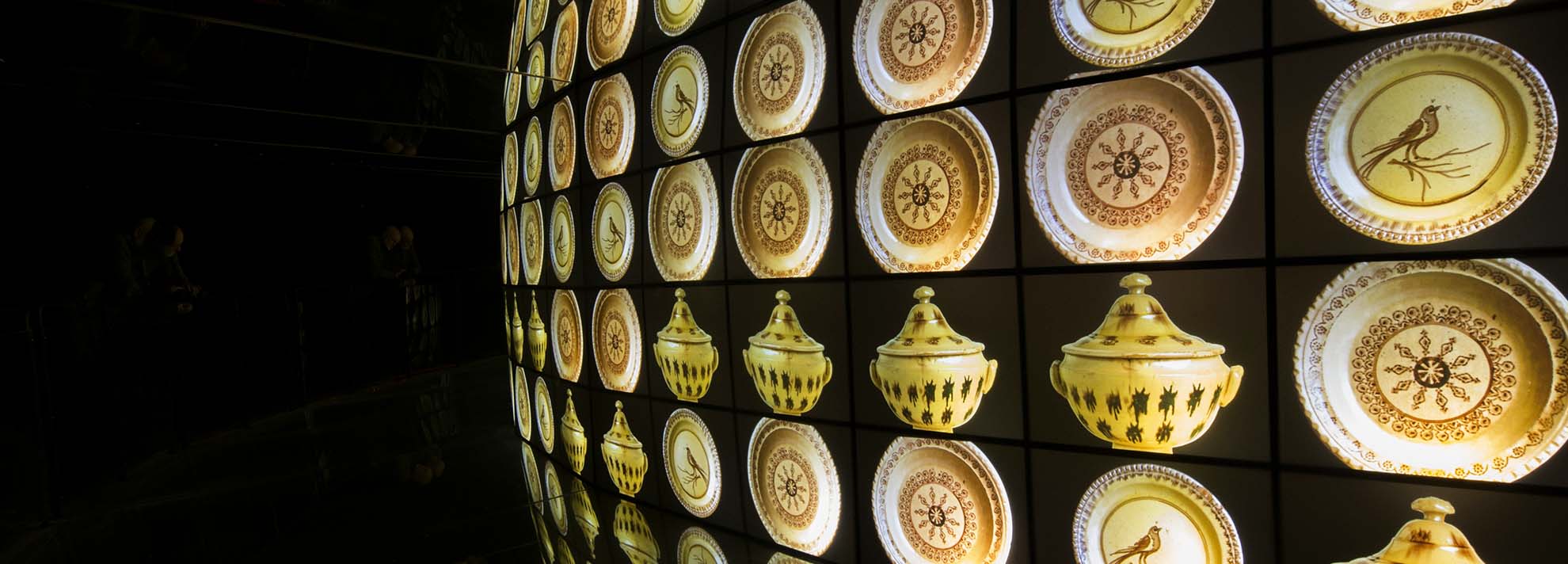Ceramics Museum: Savona and its muse

In telling her story, the curator’s eyes sparkle.
The new Ceramics Museum has returned to the city of the Popes splendid buildings, a museum centre of excellence and, above all, an important part of the history of Savona and Albissola. When the right people are in the right place at the right time, even things like these can happen.
Set up with great attention to detail, a visit to Musa (Museum of Ceramics) is a journey into the building of the Monte di Pietà, which has been skilfully restored, bringing to light frescoes, testimonies and inscriptions from the early Middle Ages.
Cecilia Chilosi, the museum’s curator, together with Eliana Mattiauda, will guide you through the four floors displaying almost a thousand very valuable pieces. Her words convey the emotion of being able to describe such wonder every day. You will find yourself surrounded by the Baroque style that characterises the entire palace and represents a felicitous encounter between painting and ceramics, in which mythological, literary and biblical episodes are recounted in every single element.
Walking through the different exhibits, you will notice a rapid change in the styles on display, which intertwine with each other, almost confusingly to the untrained eye. But listening to Cecilia’s words, step by step, all the elements will fall into place and the picture will take shape. When taste changes, the factories in Savona and Albissola reinterpret tradition always with success.
The naturalist fashion of the East, majolica reminiscent of Hispano-Islamic azulejos, Renaissance motifs, French glamour: all contributed to the fame of our ceramists among European aristocracies. Moving on, we come to society at the end of the 18th century, when ceramics also entered bourgeois and working-class homes, with terracotta, the so-called “black earthenware”, which was extraordinarily successful in exports to Italy and Europe. But after the dark, bourgeois terracotta, Musa takes us back to dreaming of grand villas with gardens, and we are enchanted by the collection of Prince Boncompagni Ludovisi of Florence, in which we find nymphs, puttos and the great beauty of nature expressed in delicate pastels.
We finally arrive in the rooms where the 20th century and the great ferment of futurism and avant-garde art that characterised the Albissola area are collected. Here we find the painter and ceramist Manlio Trucco who, fresh from his experience in Parisian fashion, brings the aesthetics of Art Deco to the small Riviera village.
The undisputed protagonists of this era include Arturo Martini, Francesco Messina, Tullio and Torido Mazzotti. The 1920s in Albissola were a creative hothouse of design, functionality and experimentation in which leading Italian sculptors and painters, including Fontana, were attracted to the small town, recognised as the avant-garde ceramic centre at an international level and even defined as the “Free Republic of the Arts” by Filippo Tommaso Marinetti.
Cecilia recounts the legendary year 1954, when Albisola was the venue of the International Ceramics Meeting organized by the Danish artist Asger Jorn: an exciting confrontation between Expressionist artists, European avant-gardes, Spatialists and Surrealists. The art world met right here in Albissola.
Just when you think you’ve reached the end of your visit and have already admired every wonder of the museum, you turn the corner and are captivated by a luminous sphere that tells the magic of ceramic history on an infinite number of small screens. A kaleidoscope of prodigious images that seems to come to live before your very eyes.



